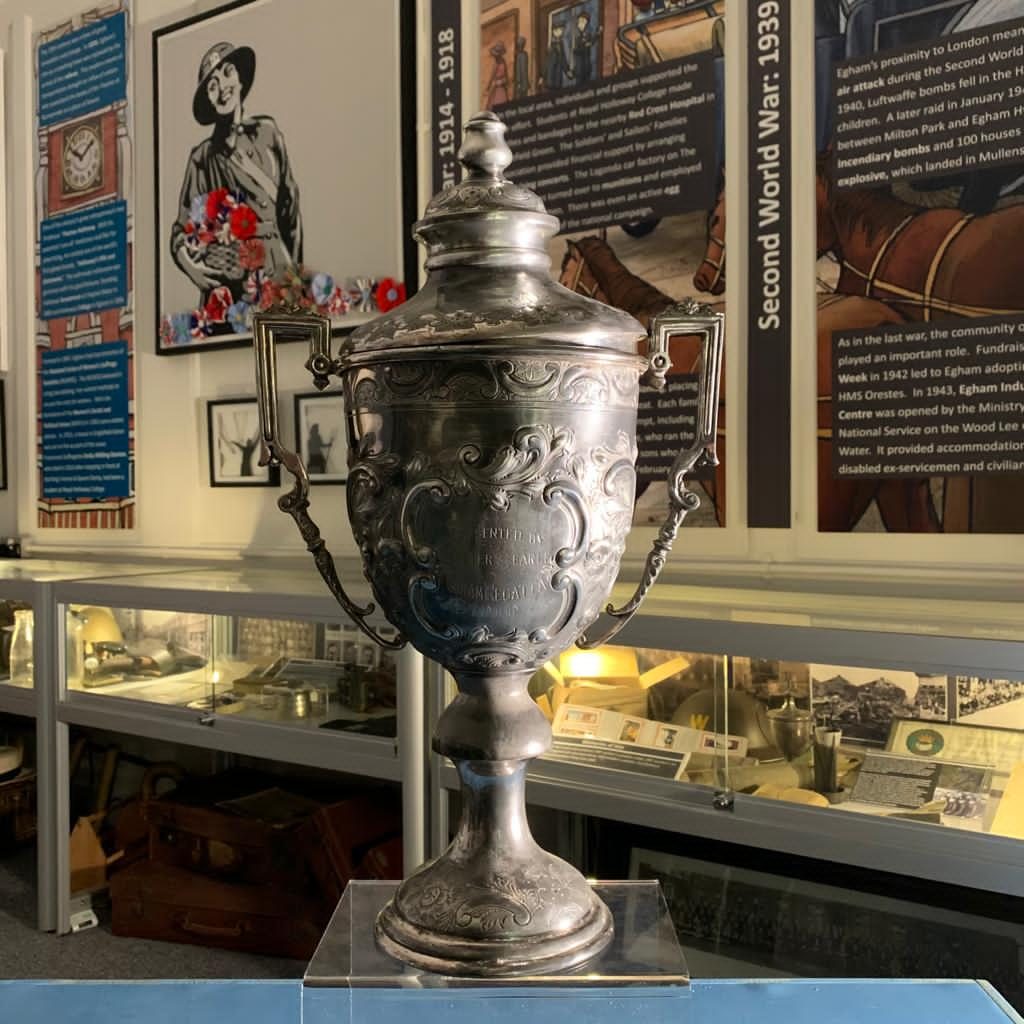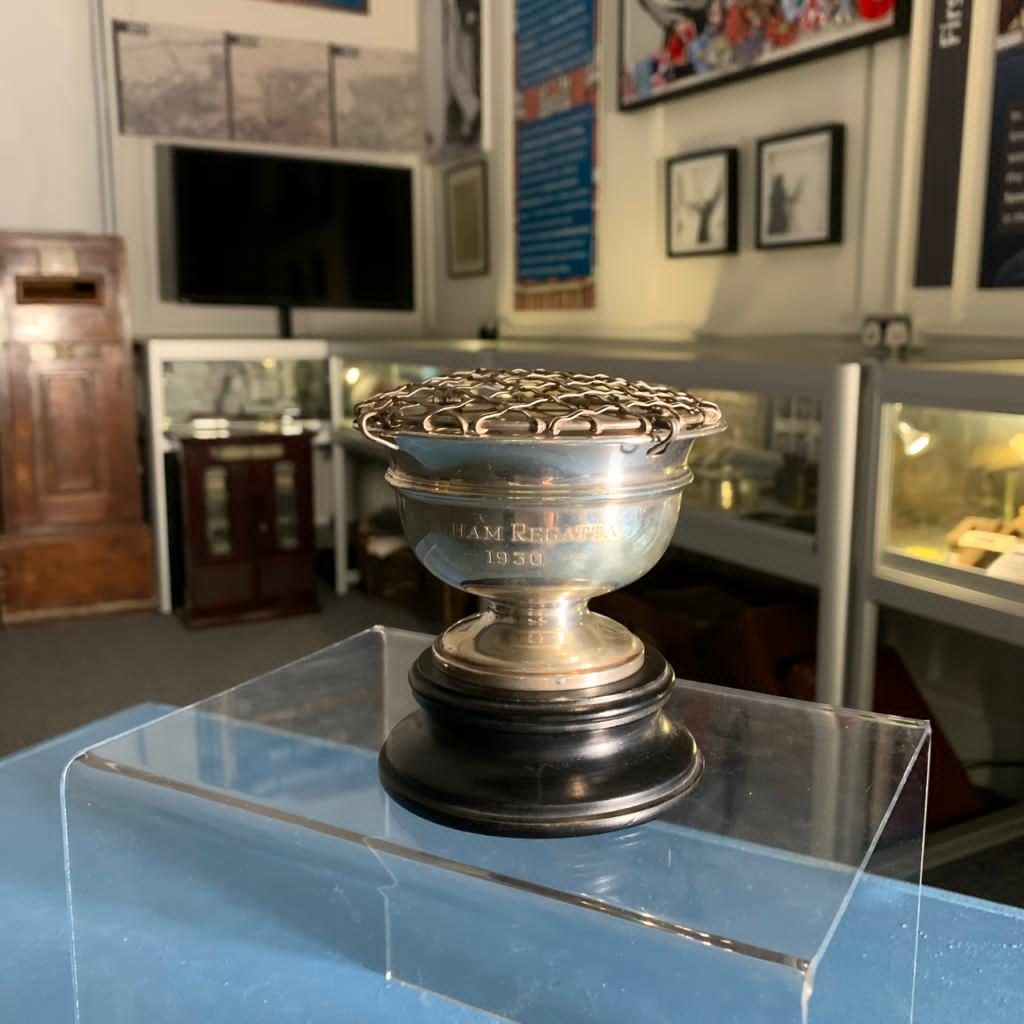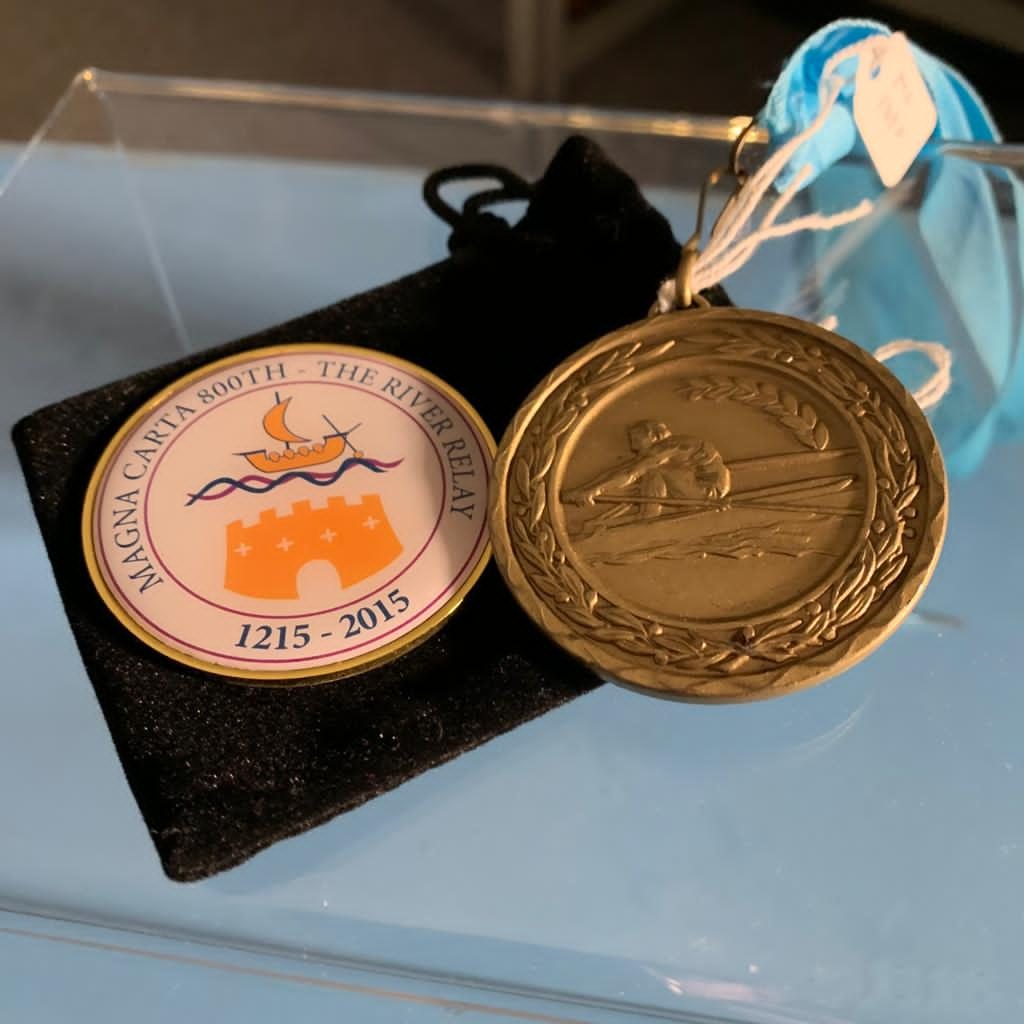The Egham Regatta
The Egham Regatta has taken place on the River Thames, just upstream from the Bell Weir Lock, since 1909. It continued throughout the 20th century, pausing only for the First and Second World Wars and a few years in the 1930s. For much of its life, the regatta has taken place in June, on the weekend directly before the Henley Royal Regatta, and has been used by crews as preparation. When the regatta was first conceived, however, the event was scheduled for much later in the season, moving to its regular slot in June over its early years. To this day, the Egham Regatta remains a fixture in the rowing calendar, continuing to take place on the weekend before Henley.
On 10 August 1909, the first meeting of the Egham Regatta committee was held on Egham High Street at the Catherine Wheel Hotel. At this meeting it was agreed that a regatta would be organised for 9 September 1909, less than one month later. The committee’s minutes (now at Surrey History Centre) note that the regatta’s start-line would be opposite the Varnish Works. In all likelihood, the Varnish Works would have been located on Yardmead, which, at this time, was an area adjacent to the river housing small factories and other light industry. The Copal Varnish Company had been established on this site somewhere between 1875/6, later becoming the site of Paripan paintworks in 1919.
Accompanying this, “it was proposed by Mr Leach and seconded by J Adams that the following races be held:
Rum Tum Double Sculling (lady cox), ditto Mixed, single sculling (lady cox), Double Punting, Single Punting, Canoe, Tub & Elopement races and swimming – to finish with King of the Mop in canoes and Fancy Dress.
Entrance Fees 1/6 single, 2/6 double punting & sculling, 1/- for any other”.
10 August, 1909 –Catherine Wheel Hotel Egham High Street
Once the practicalities of the regatta had been agreed, the committee’s attention turned to making the regatta more of a public spectacle. The local dairy farming family, GW Herd and Sons, were approached and asked whether they would be willing to allow the use of their land for the purposes of an enclosure. Similarly, it was agreed that the presence of the Town Band would further add to the public’s enjoyment. However, securing the band was dependent on the committee raising £4 4/- through subscriptions to cover their fee. A week later, plans were shaping up. The Englefield Green Public Brass Band had outbid the Egham Town Band and were duly chosen, whilst the Herd family had agreed to lend the land and also financially support the regatta. The next 3 weeks witnessed further subscribers agreeing to financially support the regatta. As the event day of the event approached, the finer details of the regatta were confirmed, including the decision to adopt the Rules and Regulations of the Staines Regatta and, most importantly, various prizes were announced.
Following the inaugural Egham Regatta in 1909, the event continued to grow in popularity. The friendly rivalry between various local bands continued to be an ever present feature. As the regatta grew in popularity and became an established important local event, bands continued to try and undercut each other in order to ensure they could play in front of the vast crowds of people. As the crowds grew so too did the interest of local firms, competing against each other to cater for those watching on the river bank.

Single Sculls T R S Saunders (Cox Miss L Figures) – presented by Walter Searle
Like the majority of events in Britain, the Great War brought about a temporary hiatus. A special meeting was held on 7 August 1914, and the following was recorded:
“A proposal was made that due to the very serious hostilities now taking place, that the Regatta be indefinitely postponed.
The Secretary was instructed to have some slips “POSTPONED” printed and these to be pasted across the Posters of Announcement”.
The temporary suspension of the Egham Regatta continued until the First World War ended. The first mention of its return came on 23 April 1919 when it was proposed to reestablish the Regatta from August that year.
Upon its resumption, however, its popularity across the interwar years failed to consistently match the hype and buzz of its earliest years. In response, a variety of things were trialled in order to boost interest, including the introduction of a Ladies Dinghy Race in 1928 and further entertainment was offered for spectators.

Possibly from Harry Gordon Daborn and Gwendolene Daborn.
During the 1930s the Egham Regatta was far from an annual event, with the decade witnessing another short hiatus of activity and then a further suspension once the fighting of the Second World War commenced.
The regatta did not resume again until 1955, by which time the more light-hearted races, such as Tub racing, had made way for more traditional rowing events. The Egham Regatta was now purely for rowing. Unsurprisingly, as the decades passed, the regatta continued to evolve subtly. 1978 saw the reintroduction of skiffing and punting, whilst junior races were introduced in the 1990s.
To commemorate the 800th anniversary of the sealing of Magna Carta, a special Magna Carta Egham Regatta was held on Sunday 28 June 2015. The event was moved slightly upstream so that the public could enjoy the racing for free from the Runnymede Meadow and crews raced at three minute intervals throughout the day. The course was also extended to 800m in length, adding a further commemorative twist to that year’s event.

MC1290 Egham Magna Carta Regatta Medallion. Awarded to all competitors.
The Egham Regatta 2020 was cancelled as a result of the Coronavirus pandemic, but will recommence in 2021.
For more information:
https://www.bbc.co.uk/news/uk-england-berkshire-30128613
http://www.sihg.org.uk/books/SurreyIndPast.pdf
http://www.eghamregatta.org.uk/magna-carta-commemoration-2015/
http://www.eghamregatta.org.uk/wp-content/uploads/2015/02/Egham-Regatta-History1909-2000.pdf
http://www.eghamregatta.org.uk/history-of-the-regatta/

